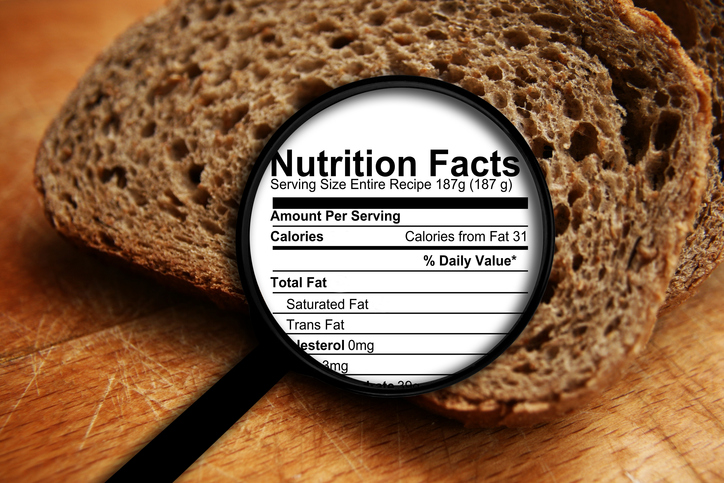What is a Calorie? And How Can You Make Them Count?

According to the Merriam-Webster Dictionary, a calorie is the amount of heat required to raise the temperature of one kilogram of water one degree Celsius. Another way to define a calorie is as a unit equivalent to the large calorie expressing heat-producing or energy-producing value in food when oxidized in the body.
What?! If you are like most people, you’re scratching your head thinking “I thought calories were what make people overweight.” Well, think again because this is only the slightest sliver of the truth when it comes to calories.
In defining calorie, the key word we should be paying attention on is “energy.” A calorie is essentially energy, and every single one of us needs energy to stay alive. Without energy, our brains would not function, our hearts would not beat, and the blood would not travel through our veins. Energy in the form of calories is crucial for our living, breathing, and other everyday functions.
What Makes a Calorie
Much like people, calories come in all shapes and sizes. To better understand calories, it may be helpful to see what they are comprised of. In other words, how many grams of carbohydrate, protein, and fat (macronutrients) it contains.
Here’s how many calories are in 1 gram of each:
- Carbohydrate — 4 calories
- Protein — 4 calories
- Fat — 9 calories
Knowing this information, one would be able to calculate the total calories, based off of how many grams of each macronutrient are in your food. Simply multiply the number of grams by the number of calories in a gram of that food component.
• grams x calories per gram = total calories
For example, if a serving of potato chips (about 20 chips) has 10 grams of fat, 90 calories are from fat.
10 grams x 9 calories per gram = 90 calories
How Do We Use Calories for Energy?
Simply put, our bodies “burn” calories through metabolic processes. Keep in mind, we previously discussed a calorie being the heat produced when food is consumed and oxidized (i.e., burned) in the body. During this metabolic process, enzymes break down the macronutrients into molecules, and three things happen, depending on the type of food:
- Carbohydrates are broken down into glucose and other sugars
- Fats become glycerol and fatty acids
- And proteins are broken into their individual amino acids
These molecules are then transported through the bloodstream to the cells. What happens next varies by individual and depends on a variety of factors, but one of two things will occur. 1) These molecules will either be absorbed for immediate use and used as fuel, or 2) they will be stored for future use. If they become stored energy, they will not be metabolized until they receive oxygen, at which point they will be released to be used for fuel.
How Many Calories Should I Be Consuming?
This is the burning question on everybody’s mind. Unfortunately, it isn’t so simple. The real answer is: it depends. There are three main factors involved in determining how many calories an individual needs to maintain optimal health and wellness, which I’ll explain in more depth below: 1) basal metabolic rate, 2) physical activity, and 3) thermic effect of food.
There are other factors, including but not limited to, age, gender, current weight, height, metabolic health, and specific goals (i.e., weight loss, weight gain, maintenance); however, this article will be focusing on the three main factors.
To better understand the three main factors and how they influence your caloric intake, let’s begin with basal metabolic rate…
1) Your basal metabolic rate (or BMR) accounts for roughly 60% of your calories, and it’s the amount of energy your body needs to function at rest. Rest being how much energy (calories) you need to stay alive (keep your heart beating, lungs breathing, kidneys functioning, and body temperature stabilized).
The Harris-Benedict Formula has been said to be the most accurate method to determine your BMR:
— Adult female: 655 + (4.3 x weight in lbs.) + (4.7 x height in inches) – (4.7 x age in years)
2) Physical activity accounts for roughly 30% of your calories, and this would include any activities that require movement. This could be any type of physical activity from exercising to household chores.
The following is a helpful chart depicting the average calories burned during 30 minutes of exercise:

3) The last major factor is the thermic effect of food. These are the calories your body burns eating, digesting, absorbing, and using food. This process is known as thermogenesis, which by definition is the process by which the body generates heat, or energy, by increasing the metabolic rate above normal.
A study was conducted by Dr. Richard Mattes, Professor of Food and Nutrition at Perdue University, in which it was found that the more you chew your food, the greater the amount of energy your body retains. Therefore, by being more mindful of your eating habits, this could provide favorable results in terms of your energy levels.
The following chart is the USDA’s recommendations for caloric intake broken down by age, gender, and physical activity:

Since this is merely a guideline, one would need to make adjustments to these recommendations based on their own physiological and psychological needs.
Taking into consideration each of the above mentioned factors, provided your goal is to maintain your current weight, you would need to exert the same amount of energy per day that you are consuming. If your goal is weight loss, you would need to exert more energy than calories consumed. And if you are looking to gain weight, then you would look to consume more calories than are being burned.
To put this in perspective, each pound is the equivalent of 3,500 calories. So, if you take in an extra 3,500 calories, you can expect to see a 1-pound increase in your overall body mass. On the other hand, by burning an extra 3,500 calories, you would see a reduction of 1 pound.
There is, however, more to the manipulation of your overall body weight than adjusting calories consumed and calories burned (i.e., a calorie is not really a calorie). One must also take into consideration the amounts of each macronutrient they are consuming, and which amounts of each are more favorable for sustaining your energy. This, however, is a discussion for another article.







